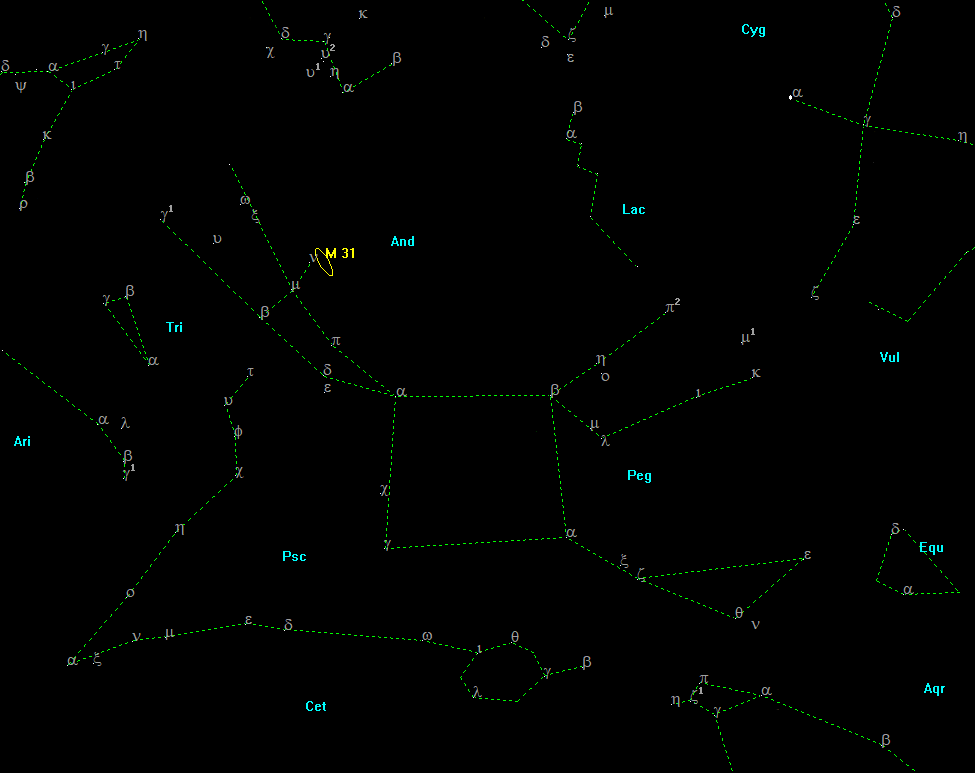The starry sky in October 2023
After the equinox on 23.09., the length of the nights predominates again. The observatory opens at 8 pm, weather permitting. As every year, on the last Sunday of the month, this October 29th, the clocks are set back by one hour to 2 o'clock at 3 o'clock in the morning. In Germany, this change was decided in 1978, but not introduced until April 30, 1980. As part of the standardization of regulations in the EU, this was extended by one month in 1996 and since then has lasted until the last weekend in October.
SUN AND MOON
On the first of the month, the sun rises above the horizon in Zweibrücken at 7:27 am CEST and, taking into account the time changeover, continues to change to 7:13 am CET at the end of the month. Accordingly, the sunsets will be earlier, from 19:13 CEST to 17:15 CET In the evening hours of October 30, the moon will be a beautiful sight in the eastern evening sky, joining the open star cluster of the Pleiades, which is already visible to the naked eye.
The full moon of September 29th will still disturb our view of the sky for the first few days. But we will on 28.10. with a partial lunar eclipse compensated. It enters the umbra at 21:35, reaching its maximum at 22:14 with just 13 percent of the moon's apparent diameter in the umbra. It exits the umbra at 22:53. Despite the low degree of occultation, it offers a nice view of the sky, which is also joined by the planet Jupiter a good 6° away in the eastern night sky.
Provided the night sky is clear, the observatory will open on Saturday, October 28 from 8 pm. Regardless of the weather, there will be a Lecture offered. For more details, see the section Events.

PLANETS
In the first few days Mercury can still be observed in the eastern morning sky.
Venus has become a highly visible object in the eastern morning sky. It crossed the horizon line at 3:37 a.m. on October 15.
Mars cannot be observed for the rest of the year. It is closer to conjunction with the Sun, so from the Earth's point of view it is close to it.
Jupiter in the evening sky is the counterpart to Venus in the morning sky. On 3.11. it is in opposition to the Sun. On October 15, it crosses the horizon at 7:22 pm. The moon is approx. 2.7° north of the planet at 2 a.m. on October 2.
Saturn is slowly withdrawing from the second half of the night. The fading ringed planet is still easy to observe in the evening sky and is located in more southerly regions of the sky after nightfall.
For the observation of the outer gas planets Uranus and Neptune small telescopes are already required.
STARRY SKY
The constant change of constellations enters its next round. On eastern sky the constellations of Taurus and Carthusian are already making their presence felt.
High above us the classic autumnal quadrilateral, the winged Pegasus, can be seen. At the upper end of Pegasus, Andromeda, one of the 48 classical constellations described by Ptolemy, is directly adjacent to the east. It also contains our neighboring galaxy, the Andromeda Nebula or M31, which can be easily seen with binoculars.
Next West direction the summer triangle bids farewell to the evening stage.
Deep in the North is the Great Bear, which is already sinking into the horizon haze with its lower stars. Opposite, on the other side of Polaris, is the "celestial W", the constellation Cassiopeia. A little further west is the constellation of Cepheus. To the east of Cassiopeia is the constellation of Perseus. According to Greek mythology, Cassiopeia and Cepheus, the then king of Ethiopia, are the parents of Andromeda, who was saved from a sea monster by Perseus. The mythological figures were immortalized in the sky. The sea monster also found its place in the sky as the constellation of the whale.
The following graphic shows the view of the sky on October 15 at 11 pm.



